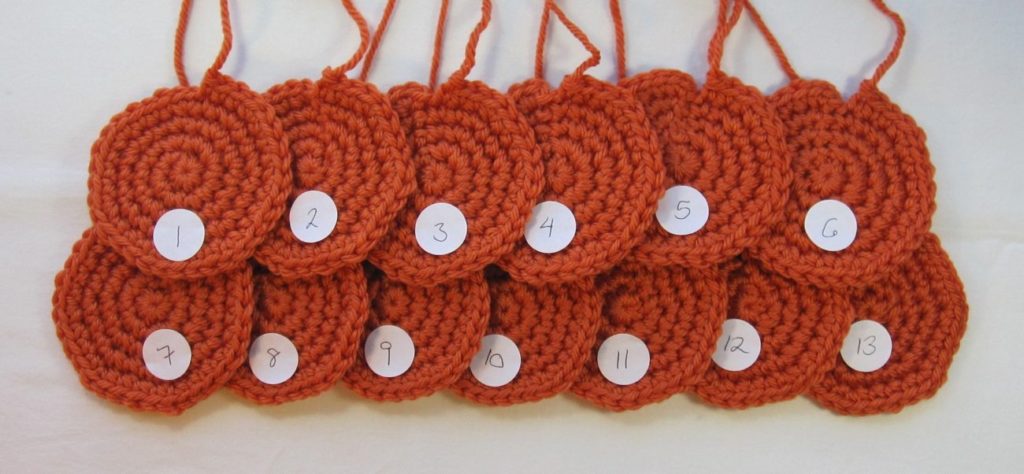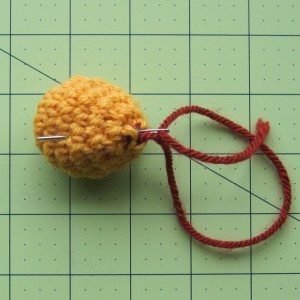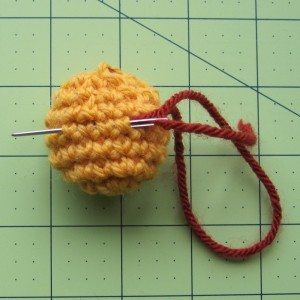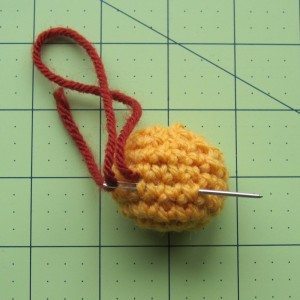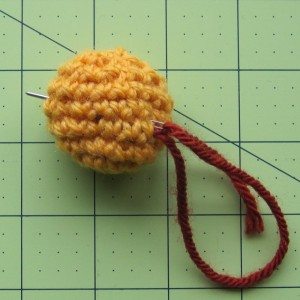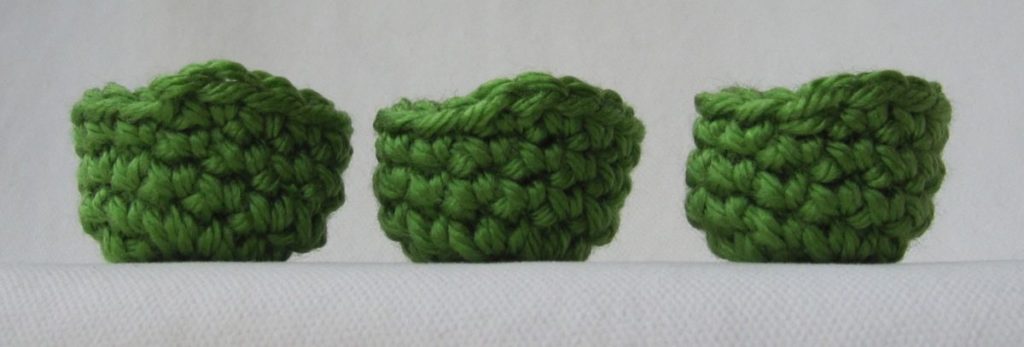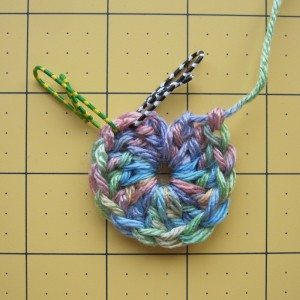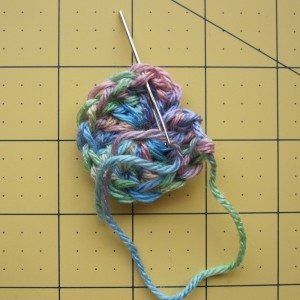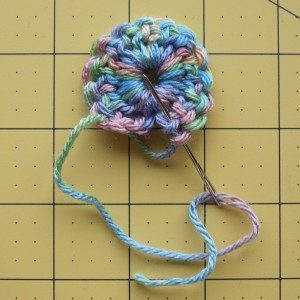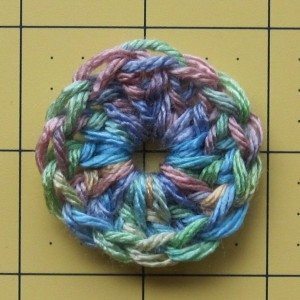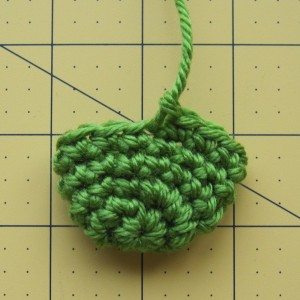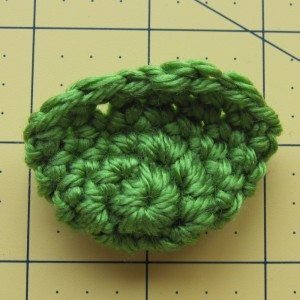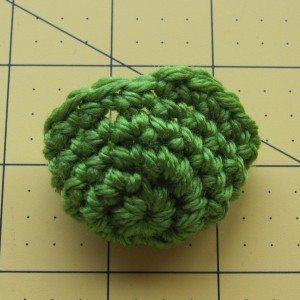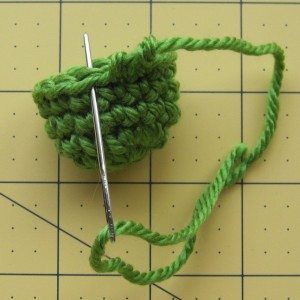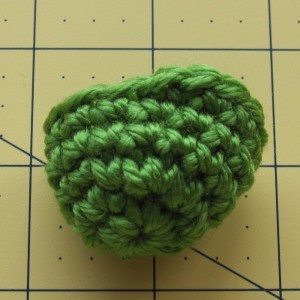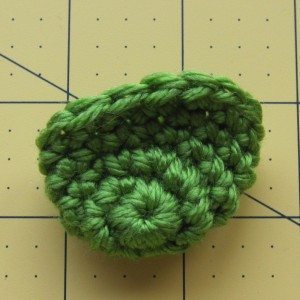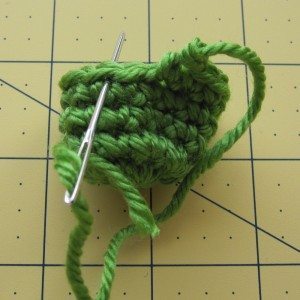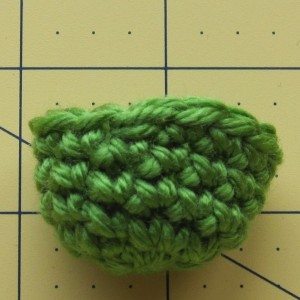There are a few ways to crochet in the round, and variations on those ways. I have a baker’s dozen of contenders for you, fighting it out to see who is the champion. I hope you like orange, because they’re all in the same orange yarn – though I have some kicky backgrounds for you, to break up the monotony.
We have essentially five techniques: spiral, stepped spiral, standard joined rounds (plus 6 variations), progressive joined rounds (plus 1 variation), and unjoined rounds (plus 1 variation). These are all cases without turning between rounds. I want to acknowledge Crochet Spot, Cre8tion Crochet, and Crochet Ever After for giving or inspiring many of these variations.
The samples are numbered by the order in which I stitched them, which is not quite the order in which they appear in the categories. I didn’t want to change the labels when I reorganized because it seemed likely I might mix some up.
Here’s the punch line: use spiral crochet for patterns that call for it. For patterns calling for you to join with a slip stitch in the first stitch of the round, chain 1, and then begin the next round in the same stitch you slip stitched into, make a slight variation: after slip stitching, hold the yarn against the hook with your thumb and pull upward to tighten the slip stitch (method 9 below). Make everything else at standard tension.
To compare, I looked at ease of stitching, seam line, biasing of stitches, the back side, and whether the end of a round aligned vertically with the beginning. The punch line is that when you can use a spiral, do. If there are features that have to be lined up, you may have to use a spiral, because it biases slightly backward (each round starts slightly earlier than the previous one), and there is no other technique that does so. There are techniques that bias forward, by starting each round in the second stitch of the previous; I call most of those “progressive.” They are interchangeable with each other but not with the spiral or techniques with no bias. Most of the techniques below do not bias either direction; they are all based on standard joined rounds. The gory details are after the jump.
